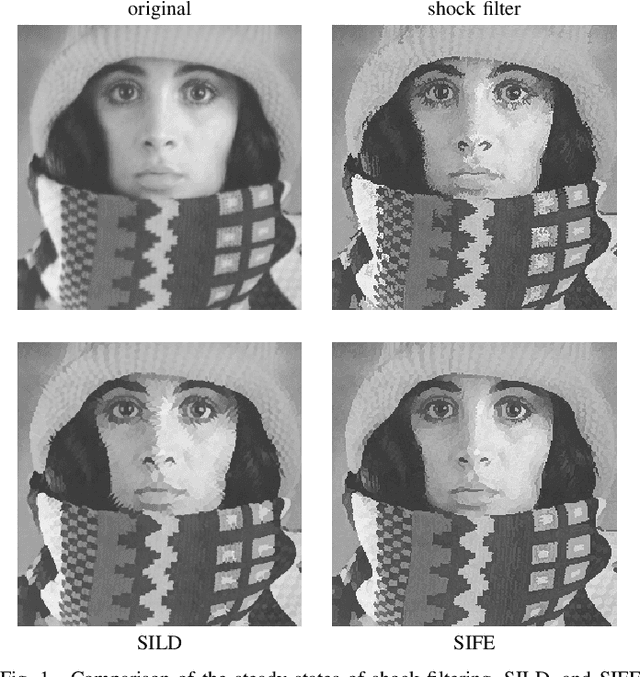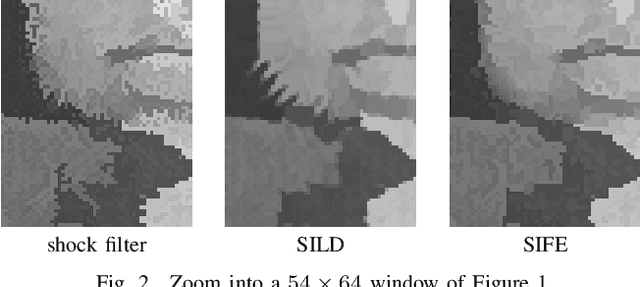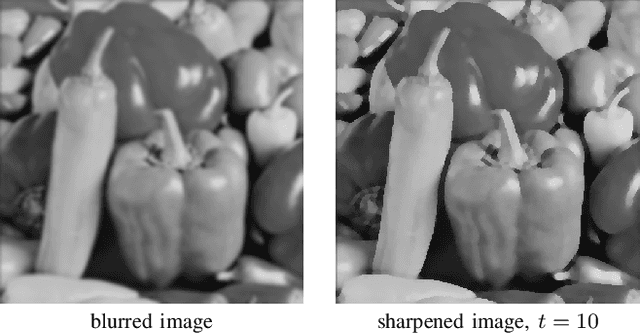Stabilised Inverse Flowline Evolution for Anisotropic Image Sharpening
Paper and Code
Jul 20, 2022


The central limit theorem suggests Gaussian convolution as a generic blur model for images. Since Gaussian convolution is equivalent to homogeneous diffusion filtering, one way to deblur such images is to diffuse them backwards in time. However, backward diffusion is highly ill-posed. Thus, it requires stabilisation in the model as well as highly sophisticated numerical algorithms. Moreover, sharpening is often only desired across image edges but not along them, since it may cause very irregular contours. This creates the need to model a stabilised anisotropic backward evolution and to devise an appropriate numerical algorithm for this ill-posed process. We address both challenges. First we introduce stabilised inverse flowline evolution (SIFE) as an anisotropic image sharpening flow. Outside extrema, its partial differential equation (PDE) is backward parabolic in gradient direction. Interestingly, it is sufficient to stabilise it in extrema by imposing a zero flow there. We show that morphological derivatives - which are not common in the numerics of PDEs - are ideal for the numerical approximation of SIFE: They effortlessly approximate directional derivatives in gradient direction. Our scheme adapts one-sided morphological derivatives to the underlying image structure. It allows to progress in subpixel accuracy and enables us to prove stability properties. Our experiments show that SIFE allows nonflat steady states and outperforms other sharpening flows.
 Add to Chrome
Add to Chrome Add to Firefox
Add to Firefox Add to Edge
Add to Edge